Your cart is currently empty!
Month: July 2024
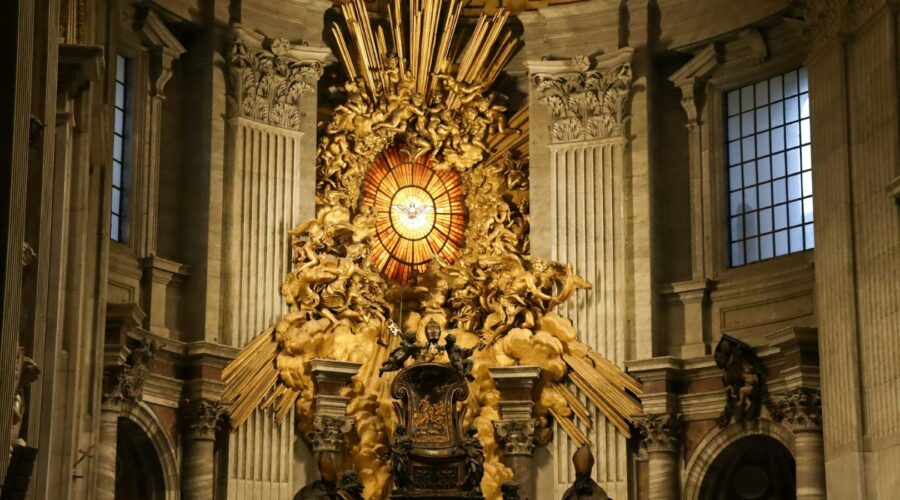
Trinity Baptist Church: A Beacon of Faith and Community
Introduction
Trinity Baptist Church is a vibrant and welcoming Christian community located in the heart of Anytown, USA. Founded in 1865, the church has a rich history of serving its members and the surrounding area.
Mission and Beliefs
Trinity Baptist Church’s mission is to glorify God by making disciples of Jesus Christ. The church believes in the Bible as the inerrant Word of God and adheres to the following core beliefs:
- The Triune God (Father, Son, Holy Spirit)
- The deity of Jesus Christ
- The sinfulness of mankind
- Salvation by grace through faith alone
- The resurrection of the dead
Worship Services
Trinity Baptist Church offers multiple worship services each week:
- Sunday Morning: 9:00 AM
- Sunday Evening: 6:00 PM
- Wednesday Night: 7:00 PM
Services include contemporary and traditional music, biblical preaching, and prayer.
Ministries
Trinity Baptist Church has a wide range of ministries to cater to the needs of all ages and interests:
Children’s Ministry
Trinity Kids provides Bible-based programs and activities for children from birth through 5th grade.
Youth Ministry
Trinity Youth Group offers discipleship, fellowship, and outreach opportunities for students in grades 6-12.
Adult Ministries
The church has various Bible studies, small groups, and outreach programs for adults.
Missions
Trinity Baptist Church supports local, national, and international mission organizations.
Community Involvement
Trinity Baptist Church is actively involved in the local community:
- Providing meals and shelter to the homeless
- Tutoring and mentoring underprivileged children
- Hosting community events and celebrations
Leadership
Trinity Baptist Church is led by a dedicated team of pastors and elders:
Leadership Team Name Title Email John Smith Senior Pastor [email protected] Mary Jones Associate Pastor [email protected] Bob Roberts Elder [email protected] Contact Information
Trinity Baptist Church
123 Main Street
Anytown, USA 12345
123-456-7890
[email protected]
www.trinitybaptist.orgConclusion
Trinity Baptist Church is a thriving Christian community that welcomes people from all walks of life. With its dynamic ministries, vibrant worship services, and commitment to community involvement, Trinity Baptist Church is a beacon of faith and service in Anytown.
Frequently Asked Questions
-
What time are your worship services?
Sunday Morning: 9:00 AM; Sunday Evening: 6:00 PM; Wednesday Night: 7:00 PM
-
Do you have a children’s ministry?
Yes, we have Trinity Kids for children birth through 5th grade.
-
How can I get involved in the community?
Contact our ministry staff or check our website for volunteer opportunities.
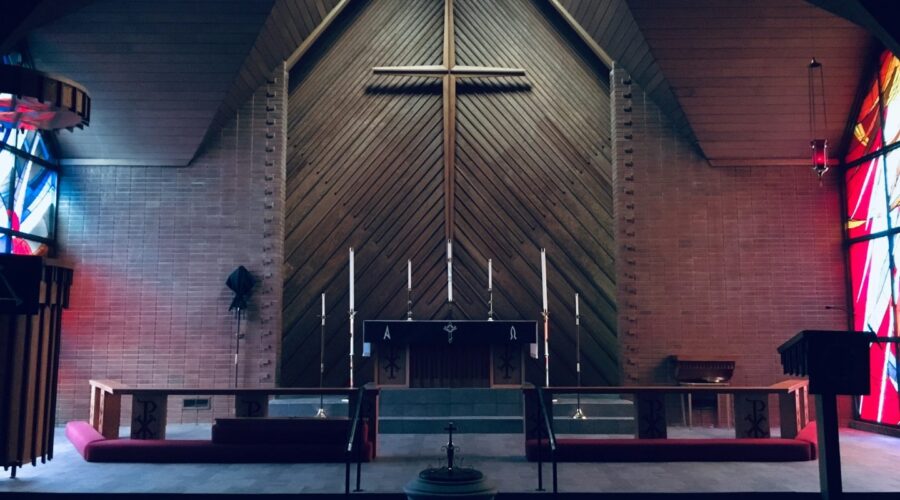
Holy Mass Today: A Comprehensive Guide for Catholic Worship
Understanding the Holy Mass
The Holy Mass is the central act of worship in the Catholic Church. It is a solemn celebration that commemorates the Last Supper of Jesus Christ and his sacrifice on the cross. The Mass is also a time for prayer, reflection, and fellowship among believers.
Key Aspects of the Mass
- Introductory Rites: The Mass begins with the Penitential Rite, which prepares the congregation for the liturgy by acknowledging their sins and seeking God’s forgiveness.
- Liturgy of the Word: This part of the Mass consists of readings from the Bible, a homily (sermon), and a time for reflection.
- Liturgy of the Eucharist: This is the central part of the Mass, where the bread and wine are consecrated and become the Body and Blood of Christ. Believers share in communion, receiving the consecrated elements as a sign of unity with God and with each other.
- Concluding Rites: The Mass concludes with a blessing, a dismissal, and a final song or hymn.
Preparing for Mass
There are several ways to prepare for Mass:
Before Mass
- Prayer and Meditation: Spend time in prayer and meditation, reflecting on the meaning of the Mass and your intention for attending.
- Confession: If you have serious sins to confess, consider going to confession before Mass to receive God’s forgiveness.
- Arrive Early: Arrive for Mass a few minutes early to find a seat and prepare yourself mentally and spiritually.
During Mass
- Be Present: Be fully present during the Mass, participating actively in the prayers, readings, and singing.
- Listen Attentively: Listen attentively to the readings and homily, seeking to understand the Word of God.
- Receive Communion: If you are properly disposed, receive communion with reverence and devotion.
After Mass
- Reflection: Take some time after Mass to reflect on the experience and consider how it can impact your life.
- Gratitude: Express gratitude for the opportunity to participate in the Mass and for the graces received.
- Live Out the Gospel: Let the Mass inspire you to live out the Gospel in your daily life.
Table: Types of Holy Mass
| Type of Mass | Purpose | Frequency |
|—|—|—|
| Sunday Mass | Weekly obligation for Catholics | Every Sunday |
| Weekday Mass | Daily celebration of the Eucharist | Varies depending on parish |
| Special Masses | Celebrate specific events or feasts | As announced by the parish |
| Votive Masses | Offer prayers for specific intentions | Upon request |
| Requiem Mass | Pray for the deceased | As needed |Links to Helpful Resources
Tips for a Meaningful Holy Mass
- Choose a Regular Time: Attend Mass regularly at the same time to develop a routine and deepen your experience.
- Bring a Prayer Book: Consider using a prayer book to follow along with the prayers and deepen your understanding.
- Receive Communion Frequently: If you are properly disposed, receive communion as often as possible to strengthen your union with Christ.
- Dress Respectfully: Dress respectfully for Mass, recognizing the solemn nature of the celebration.
- Stay for the Conclusion: Remain for the entire Mass, including the final blessing and dismissal.
Conclusion
The Holy Mass is a transformative experience that connects us with God, nourishes our faith, and inspires us to live a life of love and service. By preparing for and participating in the Mass with intention, we can deepen our relationship with Christ and grow closer to God.
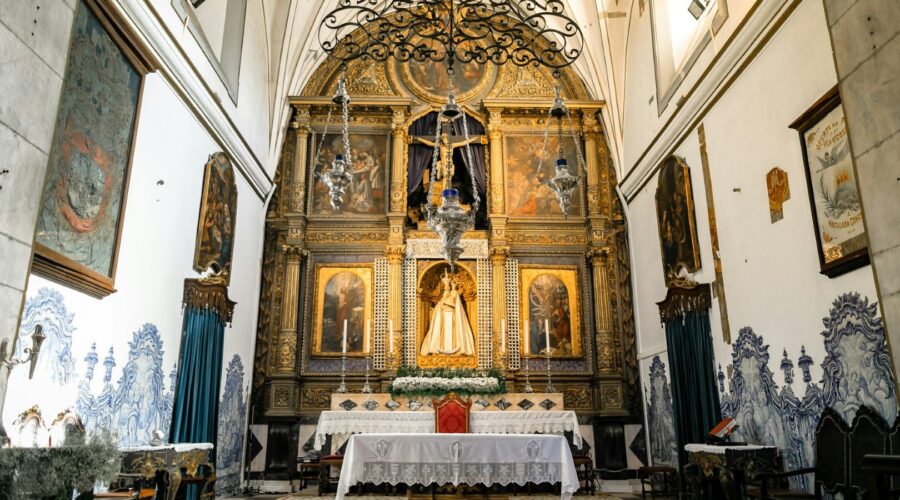
Discover the Depth and Richness of the Catholic Religion
What is Catholicism?
The Catholic Church, with approximately 1.3 billion baptized members, is the largest Christian denomination globally. It traces its history back to the teachings of Jesus Christ and the apostles, emphasizing the importance of faith, tradition, and the sacraments.
Key Beliefs of Catholicism
Trinity
Catholics believe in the Holy Trinity: God the Father, God the Son (Jesus Christ), and God the Holy Spirit. They view the Trinity as three distinct persons in one divine being, each playing a unique role in salvation.
Incarnation
The Incarnation is the belief that God the Son became human in the person of Jesus Christ. Catholics hold that Jesus was truly human and truly divine, reconciling humanity to God through his life, death, and resurrection.
Sacraments
Sacraments are sacred rituals instituted by Jesus Christ that mediate grace and strengthen the bonds within the Catholic community. The seven sacraments recognized by the Catholic Church are Baptism, Confirmation, Eucharist, Penance, Anointing of the Sick, Holy Orders, and Marriage.
Eucharist
The Eucharist, also known as Holy Communion, is the central sacrament of the Catholic faith. Catholics believe that bread and wine consecrated by a priest during Mass become the true body and blood of Jesus Christ.
Catholic Traditions and Practices
Liturgy and Worship
Catholic worship is centered on the Mass, which includes readings from the Bible, prayers, and the Eucharist. Other forms of worship include prayer, sacraments, and pilgrimages.
Papacy and Hierarchy
The Catholic Church is led by the Pope, considered the successor of the apostle Peter. The Church has a hierarchical structure, with bishops, priests, and deacons serving as ordained ministers.
Canon Law
Canon law is the set of laws and regulations that govern the Catholic Church. It covers areas such as sacraments, marriage, and church administration.
Social Justice and Mission
Catholics believe in promoting social justice and serving the poor and marginalized. This is reflected in their teachings on human rights, education, healthcare, and care for the environment.
Modern Challenges and Perspectives
The Catholic Church has faced challenges in recent years, including declining attendance, changing societal values, and internal controversies. However, it continues to adapt and evolve, emphasizing dialogue, transparency, and inclusivity.
Conclusion
The Catholic religion is a vibrant and multifaceted faith tradition with a rich history, deep beliefs, and a strong commitment to serving God and humanity. It offers its followers a profound sense of spirituality, community, and purpose.
Table 1: The Seven Sacraments of the Catholic Church Sacrament Description Baptism Initiation into the Catholic community Confirmation Strengthening of faith and gifts of the Holy Spirit Eucharist Receiving the body and blood of Jesus Christ Penance Confession and forgiveness of sins Anointing of the Sick Comfort and healing for those suffering from illness Holy Orders Ordination to priesthood or diaconate Marriage Blessing and covenant between spouses Visit the Vatican website for more information and resources.
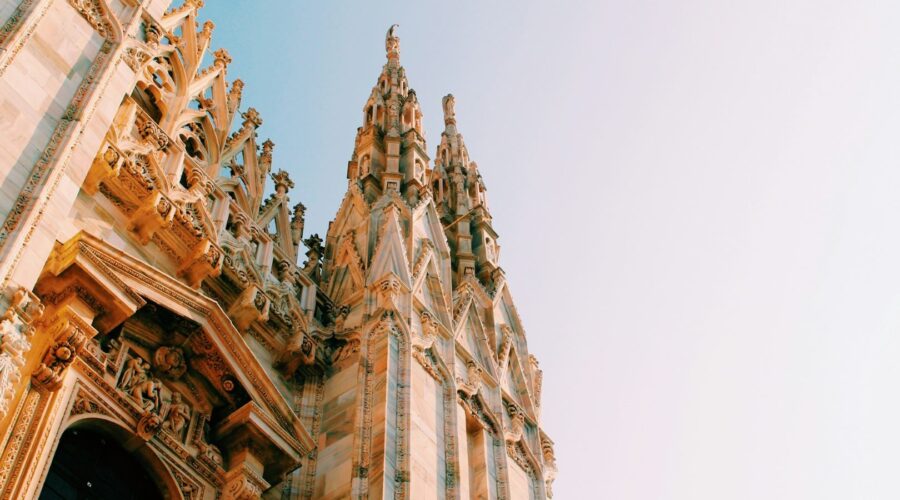
Prayers to Say Before Dinner: A Guide for Every Occasion
Why Say a Dinner Prayer?
Saying a dinner prayer is a way of expressing gratitude for the food we are about to eat, as well as the people we are sharing it with. It can also be a time to reflect on our blessings and to ask for God’s guidance and protection.
Different Types of Dinner Prayers
There are many different types of dinner prayers, and the one you choose will depend on your personal beliefs and preferences. Some common types of dinner prayers include:
- Traditional prayers: These are the prayers that have been passed down through generations, and they often include specific requests for God’s blessing on the food and the people gathered around the table.
- Contemporary prayers: These prayers are more modern in language and style, and they often focus on expressing gratitude for the food and the people we are sharing it with.
- Personal prayers: These prayers are written from the heart, and they can be anything you want to say to God.
When to Say a Dinner Prayer
There is no right or wrong time to say a dinner prayer. Some people choose to say it before they start eating, while others wait until everyone is seated at the table. If you are unsure of when to say a prayer, you can always ask the host or hostess of the meal.
How to Say a Dinner Prayer
There is no one right way to say a dinner prayer. You can pray silently to yourself, or you can pray out loud for everyone to hear. If you are praying out loud, you can either memorize a prayer or speak from your heart.
Here are some tips for saying a dinner prayer:
- Be sincere. The most important thing is to be sincere in your prayer. Don’t just say words because you think you should. Mean what you say, and say it from the heart.
- Be brief. A dinner prayer should be brief and to the point. Don’t ramble on for too long. People are hungry and want to eat!
- Be respectful. When you are praying, be respectful of the people and the place you are in. Don’t be loud or disruptive.
Dinner Prayers for Different Occasions
Here are some sample dinner prayers that you can use for different occasions:
- For a family dinner:
Heavenly Father, we thank you for this food and for the family we share it with. We pray that this meal will nourish our bodies and strengthen our bonds. Amen.
- For a dinner with friends:
Dear Lord, we thank you for this food and for the friends who have gathered to share it with us. We pray that this meal will be a time of laughter, fellowship, and joy. Amen.
- For a special occasion dinner:
Gracious God, we thank you for this special occasion and for the food that we are sharing. We pray that this meal will be a time of celebration and joy. Amen.
Conclusion
Saying a dinner prayer is a meaningful way to express gratitude for the food we are about to eat and the people we are sharing it with. It can also be a time to reflect on our blessings and to ask for God’s guidance and protection. Whether you choose to say a traditional prayer, a contemporary prayer, or a personal prayer, the most important thing is to be sincere and to pray from the heart.
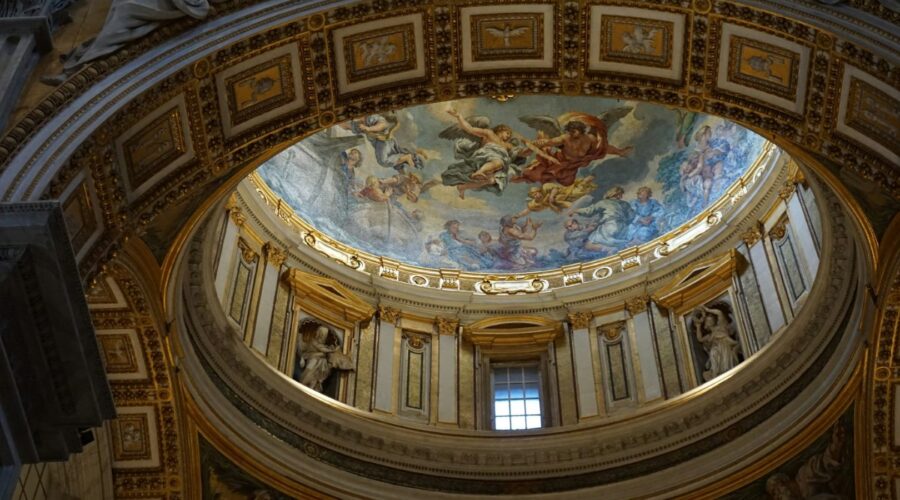
Discover the Evangelical Lutheran Church: A Comprehensive Guide to History, Beliefs, and Practices
Introduction
The Evangelical Lutheran Church (ELC), a branch of Protestantism within Christianity, traces its roots back to the teachings of Martin Luther, the influential 16th-century reformer. The ELC is characterized by its central beliefs, rich theological history, and vibrant community of worshippers.
Historical Foundations
Martin Luther’s Reformation
Martin Luther, a German monk and theologian, challenged the practices and teachings of the Roman Catholic Church in the early 1500s. Luther emphasized the importance of faith alone (sola fide) in salvation and rejected the idea of meritorious works or intermediaries between God and humanity.
The Augsburg Confession
In 1530, the Lutheran Church presented its theological stance to the Holy Roman Emperor in the Augsburg Confession. This document outlined the core beliefs of Lutheranism, including the rejection of papal authority and the emphasis on the Bible as the sole source of Christian doctrine.
Core Beliefs
Sola Scriptura
The ELC upholds the belief in sola scriptura (Scripture alone) as the supreme authority for Christian faith and practice. The Bible is considered to be the infallible Word of God, and its teachings form the basis of Lutheran doctrine and ethics.
Sola Fide
Lutheranism emphasizes salvation by faith alone. Individuals are reconciled to God solely through God’s grace, not through good works or sacraments. Faith in Jesus Christ is central to the Lutheran understanding of salvation.
Sola Gratia
The doctrine of sola gratia (grace alone) teaches that God’s grace is freely bestowed upon humanity, regardless of their merit or worthiness. Salvation is a gift from God that is not earned or deserved.
Liturgy and Sacraments
The ELC has a rich and dynamic liturgy, which refers to the specific order and format of worship. Worship services include hymns, prayers, readings from Scripture, and a sermon.
Baptism
Baptism is one of two sacraments recognized by the ELC. It symbolizes the cleansing from sin and the reception of the Holy Spirit. Infants and adults are both welcomed for baptism.
Holy Communion
Holy Communion, also known as the Lord’s Supper or Eucharist, is the second sacrament in the ELC. It commemorates the death and resurrection of Jesus Christ and is believed to be a means of grace whereby believers receive the body and blood of Christ.
Church Governance and Polity
Synodical Structure
The ELC is organized into synods, regional bodies that oversee the governance and ministry within their respective jurisdictions. Each synod has its own leadership and organizational structure.
Pastoral Ministry
ELC pastors are ordained ministers who serve as leaders and shepherds of their congregations. They are responsible for preaching, administering sacraments, and providing spiritual guidance.
Lay Leadership
Lay leadership plays a vital role in the ELC. Elected members of the congregation serve on committees, boards, and councils to assist in decision-making and administration.
Social and Community Engagement
Social Justice
The ELC has a strong commitment to social justice, advocating for the poor, marginalized, and oppressed. Lutheran churches and organizations work to promote human dignity, equality, and peace.
Community Outreach
ELC congregations often engage in community outreach programs, such as providing food assistance, offering shelter to the homeless, and organizing youth programs.
Conclusion
The Evangelical Lutheran Church is a vibrant and diverse community of faith that continues to carry the legacy of Martin Luther’s Reformation. Its core beliefs, rich liturgy, and commitment to social justice guide the lives and ministries of its members. The ELC offers a welcoming space for those seeking spiritual growth, community, and a life of discipleship.
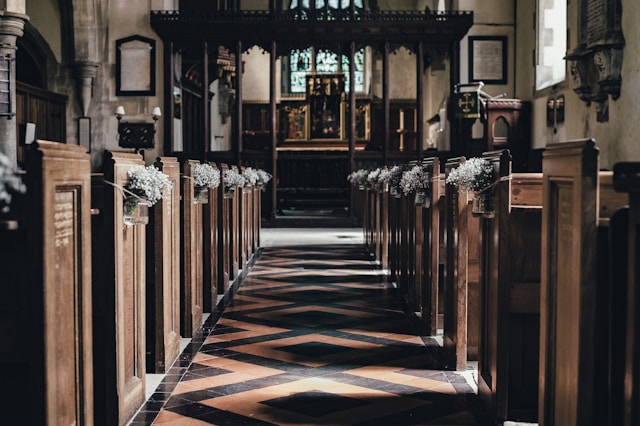
The Redemption Church: A Path to Transformation and Salvation
Introduction
The Redemption Church, a beacon of faith and renewal, stands as a testament to the transformative power of God’s grace. Rooted in the teachings of Christianity, it offers a sanctuary where individuals embark on a journey of redemption, forgiveness, and spiritual awakening.
Doctrine and Beliefs
Core Beliefs
- The Trinity: God the Father, God the Son (Jesus Christ), and God the Holy Spirit
- The deity of Jesus Christ and his sacrificial death and resurrection
- The salvation of believers through grace and faith alone
- The indwelling of the Holy Spirit in believers
- The return of Jesus Christ and the final judgment
Mission and Vision
The Redemption Church’s mission is to spread the Gospel of Jesus Christ, leading people to know him, grow in their faith, and serve others.
Its vision is to be a vibrant and impactful community of believers, transforming lives and making a difference in the world.
Membership and Discipleship
Becoming a Member
Individuals seeking membership in the Redemption Church must first profess their faith in Jesus Christ as their Lord and Savior. They participate in a membership class that covers the church’s doctrine, beliefs, and practices.
Discipleship
The Redemption Church emphasizes discipleship, the process of growing in one’s faith and knowledge of God. Members engage in Bible studies, small groups, and mentorship programs to deepen their understanding and apply biblical principles to their daily lives.
Worship and Ministries
Worship Services
The Redemption Church holds regular worship services that include praise and worship, prayer, Bible teaching, and Communion. Services are designed to inspire, encourage, and connect believers with God and one another.
Ministries
The church offers a wide range of ministries to meet the diverse needs of its congregation:
- Children’s and youth ministries
- Missions and outreach programs
- Support groups for various ages and needs
- Prayer and healing ministries
- Music and creative arts ministries
Community Impact and Outreach
Community Outreach
The Redemption Church actively engages in its community through various outreach initiatives:
- Food banks and meal programs for the needy
- Tutoring and mentoring for underprivileged youth
- Support for homeless and at-risk individuals
- Disaster relief and recovery assistance
Global Missions
The church also supports global missions efforts, sending missionaries and resources to various countries to spread the Gospel and provide humanitarian aid.
Conclusion
The Redemption Church serves as a beacon of hope and redemption in the modern world. Through its unwavering belief in the transformative power of God’s grace, it provides a pathway for individuals to experience forgiveness, spiritual growth, and a meaningful life of purpose and fulfillment. By embracing the teachings of Jesus Christ and engaging in a community of faith and service, members of the Redemption Church embark on a journey of transformation, becoming agents of change in their own lives and in the world around them.
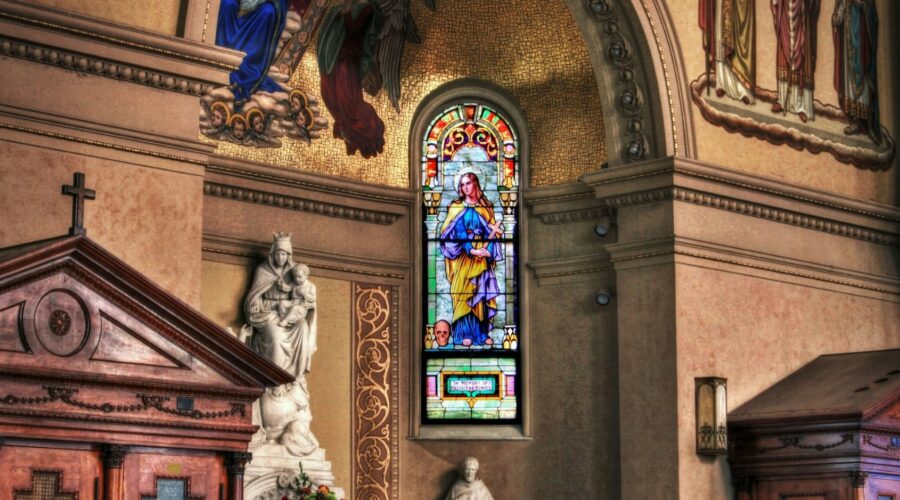
Unveiling the Tapestry of Catholic Readings: A Comprehensive Guide
In the rich tapestry of the Catholic faith, readings from Scripture hold a central place. They provide nourishment, guidance, and inspiration for our spiritual journey. This guide aims to shed light on the diverse world of Catholic readings, offering insights into their origins, significance, and practical applications.
Origins and History of Catholic Readings
The practice of reading from the Bible in public worship has its roots in the early Church. The New Testament itself records instances of liturgical readings in synagogues (Acts 13:15). Over time, specific texts were designated for reading on various occasions, such as feast days and Sundays.
The selection and arrangement of readings in Catholic liturgy have evolved throughout history. The Roman Missal, the official liturgical book of the Roman Catholic Church, contains a comprehensive collection of readings for all days of the liturgical year.
Types of Catholic Readings
Catholic readings fall into several categories, each serving a distinct purpose within the liturgy:
First Reading (Old Testament or Acts of the Apostles)
The First Reading typically presents a passage from the Old Testament or, during Eastertide, from the Acts of the Apostles. It serves to establish a connection between the ancient faith of Israel and the Christian message.
Responsorial Psalm
After the First Reading, a responsorial psalm is proclaimed or sung. The psalm provides a bridge between the Old Testament and the Gospel reading, offering praise or meditation related to the theme of the day.
Second Reading (Epistle)
The Second Reading is taken from one of the New Testament letters (epistles). It usually expounds on the themes introduced in the Gospel reading, providing further insights and apostolic teaching.
Gospel Acclamation (Alleluia or Sequence)
Before the Gospel reading, an acclamation is sung or recited. This short phrase expresses our joy and anticipation as we prepare to hear the words of Jesus.
Gospel Reading
The Gospel reading is the highlight of the liturgy. It presents a passage from one of the four Gospels, recounting the words and deeds of Jesus Christ. The Gospel reading provides the primary message and teaching for the day.
Homily
After the Gospel reading, a priest or deacon delivers a homily. The homily expounds on the readings, relating them to our daily lives and offering spiritual guidance.
Significance of Catholic Readings
Catholic readings hold immense significance for the spiritual growth and well-being of the faithful:
Nourishment for the Soul
Through the readings, we encounter the living Word of God. They provide nourishment for our souls, strengthening our faith and inspiring our hearts.
Encounter with Christ
The Gospel reading in particular offers a personal encounter with Jesus Christ. We hear his words, witness his miracles, and share in his life-giving message.
Instruction and Guidance
The readings provide instruction and guidance for our daily lives. They teach us about God’s love, his commandments, and the virtues we are called to live by.
Liturgical Context
The readings are not isolated texts but are read within the context of the liturgy. They interact with the prayers, music, and rituals, enriching our understanding of the Church’s worship.
Practical Applications of Catholic Readings
Here are some practical ways to engage with Catholic readings:
Daily Reading
In addition to liturgical readings, daily reading of the Bible is highly encouraged. Reading the Scriptures daily nourishes our faith and helps us grow in our relationship with God.
Study and Reflection
Take time to reflect on the readings, ponder their meaning, and apply their teachings to your life. Use resources such as commentaries, Bible studies, or online materials to deepen your understanding.
Lectio Divina
Lectio divina is an ancient practice of prayerful meditation on Scripture. By reading, reflecting, praying, and contemplating the readings, we can experience a deeper encounter with God.
Resources for Catholic Readings
Here are some resources where you can access Catholic readings:
- USCCB Daily Readings
- Liturgical Documents from the Vatican
- New American Bible (NAB)
- The New Jerusalem Bible (NJB)
Conclusion
Catholic readings are a treasure that enriches our spiritual journey. By understanding their origins, types, significance, and practical applications, we can fully appreciate their transformative power. May we embrace the Word of God, let it nourish our souls, and guide us in our daily lives.
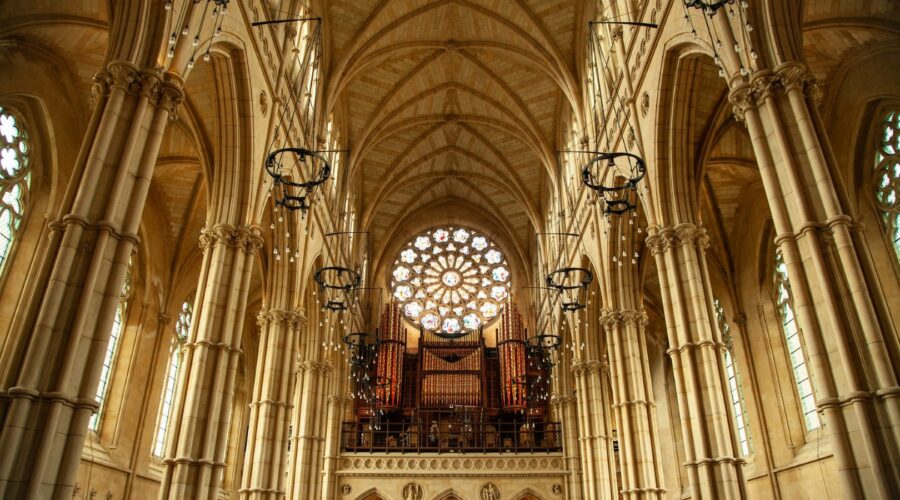
Unlocking the Power of Thrive Church: A Comprehensive Guide
Introduction
In the realm of faith and spirituality, Thrive Church stands as a beacon of inspiration and transformation. With its innovative approach to worship, discipleship, and community engagement, Thrive Church empowers individuals to discover their purpose, grow spiritually, and live out their faith with boldness and authenticity. This comprehensive guide will delve into the key aspects of Thrive Church, providing insights, tips, and resources to help you unlock its transformative power.
Defining Thrive Church
Thrive Church is a global network of churches founded by pastors Shane and Mary Ann Riddell. Rooted in a passion for Christ and a desire to help people experience abundant life, Thrive Church emphasizes authentic worship, biblical teaching, and practical discipleship. Its mission is to equip and empower believers to thrive in every area of their lives – spiritually, emotionally, physically, and financially.
Key Aspects of Thrive Church
1. Inspiring Worship
Thrive Church’s worship services are designed to create an immersive experience that connects individuals with God’s presence. Live music, thoughtful lyrics, and dynamic visuals combine to create an atmosphere of awe and reverence. The worship team emphasizes the importance of authenticity, leading the congregation in songs that express both the joy and vulnerability of the Christian journey.
2. Biblical Teaching
At the heart of Thrive Church is a commitment to biblical literacy and teaching. Pastors Shane and Mary Ann Riddell deliver thought-provoking messages each week, providing practical insights and encouragement from Scripture. They strive to make the Bible accessible and relevant, empowering listeners to apply God’s principles to their daily lives.
3. Intentional Discipleship
Thrive Church believes that discipleship is not a one-time event but an ongoing process of growth and transformation. Through small groups, mentorship programs, and leadership development initiatives, members are encouraged to connect with others, learn from spiritual mentors, and develop their own faith journeys.
4. Community Engagement
Thrive Church emphasizes the importance of community involvement and outreach. Members are actively encouraged to serve their local communities through volunteerism, charity work, and mission trips. The church believes that living out one’s faith includes making a positive impact on the world around them.
5. Personal Growth
Thrive Church recognizes that spiritual growth is a multifaceted journey that encompasses all aspects of life. The church offers a range of resources and programs to support members in their personal development, including financial literacy classes, marriage enrichment seminars, and health and wellness initiatives.
Tips for Getting Involved
If you’re interested in getting involved with Thrive Church, here are a few tips:
– Visit a local Thrive Church location to attend a worship service and connect with the community.
– Explore the church’s website and social media pages to learn more about their values and offerings.
– Join a small group or mentorship program to connect with other believers and grow in your faith.
– Engage in volunteer opportunities or community outreach programs to make a positive impact.Benefits of Belonging
Becoming part of the Thrive Church community offers numerous benefits, including:
– Spiritual growth and transformation
– Connection with a like-minded community
– Access to biblical teaching and resources
– Opportunities for personal and leadership development
– A sense of purpose and fulfillmentThrive Church Locations and Resources
Thrive Church has campuses in various cities worldwide. To find a location near you, visit the church’s website: https://www.thrivechurch.com/. The website also provides access to a wealth of resources, including sermons, study materials, and online courses.
Conclusion
Thrive Church is more than just a place of worship; it’s a vibrant community of believers who are committed to living out their faith with passion and purpose. By embracing its key aspects of worship, teaching, discipleship, community involvement, and personal growth, Thrive Church empowers individuals to thrive in every area of their lives. Whether you’re a lifelong Christian or just starting your spiritual journey, Thrive Church welcomes you with open arms and invites you to experience the transformative power of faith.
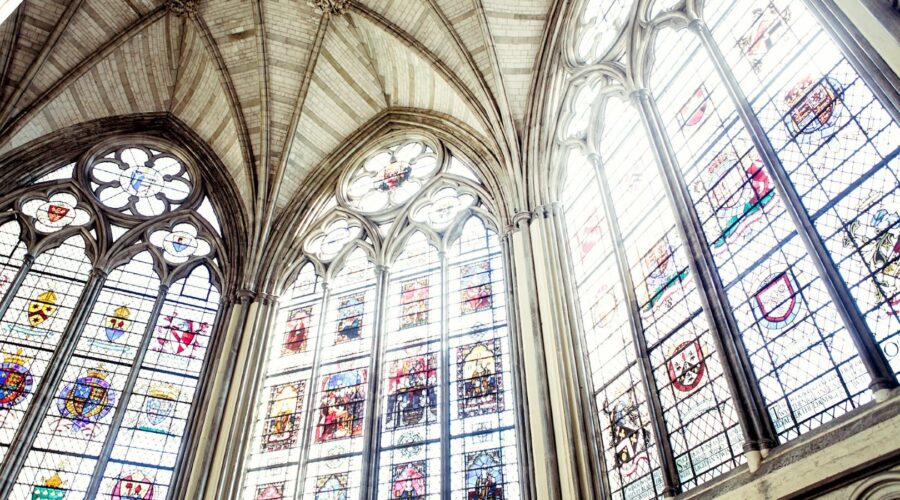
Delving into the Enigma: Resurrection – A Comprehensive Exploration
Introduction
The concept of resurrection has captivated human imagination and belief systems for centuries. In various religions, philosophies, and cultures, the notion of returning from the dead has held profound significance, sparking questions about life, death, and the nature of our existence.
Historical Perspectives on Resurrection
Ancient Egypt
In ancient Egyptian mythology, the resurrection of the pharaoh was a central concept. Through elaborate rituals, the body was preserved and the spirit was believed to journey through the underworld to reunite eventually.
Zoroastrianism
Zoroastrianism, an ancient Persian religion, believed in a final resurrection and judgment. The righteous would be resurrected to eternal paradise, while the wicked would face punishment.
Judaism
In early Jewish tradition, resurrection was not widely accepted. However, by the first century AD, the belief had gained prominence, particularly in the context of the Messianic age.
Christianity
The Christian faith places great emphasis on the resurrection of Jesus Christ. His resurrection is seen as a triumph over death and a promise of eternal life for believers.
Scientific Perspectives on Resurrection
From a scientific standpoint, the concept of resurrection presents significant challenges. However, some scientists have explored the possibility of suspending the dying process or potentially reversing certain aspects of death.
- Cryonics: Preserving bodies at extremely low temperatures in the hope that future technology may revive individuals.
- Nanotechnology: Creating devices or materials that can interact with cells and potentially repair damage caused by death.
Philosophical Considerations of Resurrection
The Problem of Identity
Resurrection raises questions about the identity of the resurrected individual. If the body undergoes significant changes after death, how can we retain consciousness and memories?
The Nature of Life and Death
The concept of resurrection challenges our understanding of the boundaries between life and death. If death can be reversed, what are the implications for our perception of mortality?
Implications of Resurrection
- Eternal Life: The possibility of resurrection offers hope for a continuation of existence beyond physical death.
- Moral Responsibility: If we are held accountable for our actions beyond this life, it may influence our behavior and ethical choices.
- Technological Advancements: Scientific research on resurrection could lead to breakthroughs in medical treatments and life extension.
Conclusion
The concept of resurrection remains a multifaceted topic that transcends religious, philosophical, and scientific boundaries. While it poses challenges and uncertainties, it continues to inspire hope, raise profound questions, and shape our understanding of human existence.
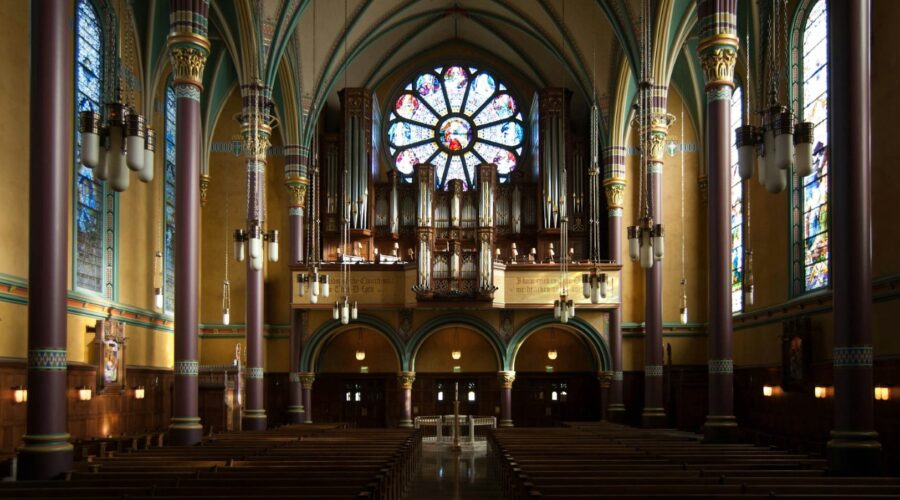
Crossroads Christian Church: A Comprehensive Guide to Faith, Community, and Service
About Crossroads Christian Church
Crossroads Christian Church is a multi-campus evangelical church with a global reach. Founded in 1981 by Pastors Mark and Gretchen Fournier, it has grown to over 100,000 members across its campuses in California, Florida, Hawaii, Nevada, and Arizona.
Crossroads is known for its engaging worship services, relevant teaching, and vibrant community life. The church emphasizes the importance of spiritual growth, discipleship, and service to others.
Core Values and Beliefs
Crossroads holds to the following core values and beliefs:
- The Bible is the inspired and authoritative Word of God.
- Jesus Christ is the only savior and Lord.
- The Holy Spirit empowers believers for Christian living.
- The church is a community of believers who gather to worship, grow, and serve.
- Every person is created in the image of God and has value.
Ministries and Programs
Crossroads offers a wide range of ministries and programs for all ages and stages of life. These include:
Worship Services
- Contemporary and traditional worship services
- Live music and dynamic preaching
- Opportunities for prayer and communion
Discipleship and Growth
- Small groups for Bible study and spiritual growth
- Classes and seminars on various Christian topics
- Mentoring programs for new and growing believers
Children and Youth Ministries
- Age-specific programs for children and youth
- Biblical teaching, games, and fun activities
- Mission trips and service opportunities
Community and Outreach
- Community outreach programs to meet local needs
- Mission trips to serve around the world
- Partnerships with local organizations and charities
Upcoming Events
For a list of upcoming events at Crossroads Christian Church, please visit their website.
Giving and Support
Crossroads is a self-funded church that relies on the generous giving of its members and attendees. There are several ways to give:
- Online giving via the church website
- Text-to-give
- Mail-in checks
- In-person giving at services
Your financial support helps Crossroads continue to minister to its members and the community.
Contact Information
To learn more about Crossroads Christian Church or to find a campus near you, please visit their website at www.crossroadschurch.com or contact them at:
- Phone: (949) 651-7200
- Email: [email protected]
- Address: 23332 Moulton Parkway, Laguna Hills, CA 92653
Conclusion
Crossroads Christian Church is a vibrant and growing community of believers committed to living out their faith in all areas of life. Whether you are seeking a spiritual home, looking to grow in your relationship with God, or simply want to make a difference in the world, Crossroads has something to offer you.
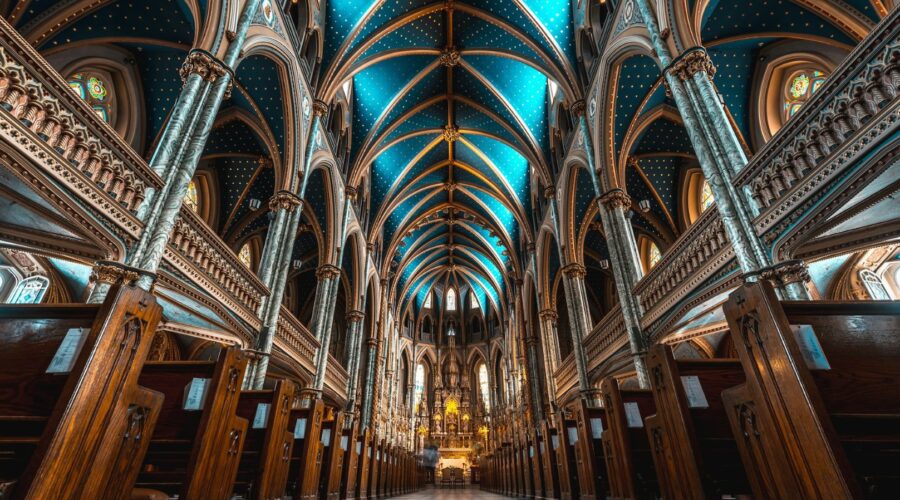
Discover the Splendors of the Sacred Heart Church: A Comprehensive Guide
A Beacon of Faith and Architectural Marvel
Nestled amidst the vibrant tapestry of Barcelona, Spain, the Sacred Heart Church stands as a testament to the grandeur of Gothic Revival architecture. Conceived by the renowned architect Antoni Gaudí, this awe-inspiring basilica is a culmination of his visionary artistry and a profound symbol of faith.
Historical Context
The inception of the Sacred Heart Church can be traced back to 1874, when the Josep Maria Bocabella, a fervent Catholic, purchased a plot of land on the outskirts of Barcelona with the intention of erecting a temple dedicated to the Sacred Heart of Jesus. Gaudí was entrusted with the architectural design in 1883, embarking on a project that would span four decades and become one of his most enduring masterpieces.
Architectural Prowess
The Sacred Heart Church is a symphony of architectural brilliance, showcasing Gaudí’s signature style that seamlessly blends Gothic, Art Nouveau, and Modernista elements. The majestic façade is adorned with intricate carvings, vibrant mosaics, and soaring spires, creating an ethereal presence that captivates all who behold it.
Façade
The façade of the Sacred Heart Church is divided into three distinct sections, each representing a stage in the life of Christ. The lower section, known as the Nativity Façade, depicts the birth and early life of Jesus. The central section, the Passion Façade, portrays scenes from his crucifixion, death, and resurrection. The upper section, the Glory Façade, celebrates the ascension of Christ and the triumph of the Catholic Church.
Towers and Spires
The Sacred Heart Church boasts a total of eighteen towers and spires, each meticulously designed to convey a specific religious symbolism. The central tower, known as the Tower of Jesus Christ, reaches a height of 170 meters and is adorned with a gilded statue of Christ holding a cross. The twelve apostles are represented by the remaining towers, while the four evangelists are symbolized by the pinnacles on each corner of the church.
Interior
The interior of the Sacred Heart Church is a testament to Gaudí’s genius for creating spaces that inspire both awe and introspection. The nave is a vast and soaring space, supported by slender columns that resemble trees, creating a serene and otherworldly atmosphere. The stained-glass windows, designed by Joan Vila-Grau and crafted by Josep Maria Jujol, bathe the interior in a kaleidoscope of colors.
Crypt
Beneath the main altar of the Sacred Heart Church lies the crypt, where the remains of Antoni Gaudí rest. The crypt is a somber and reflective space, adorned with sculptures and mosaics that pay homage to the architect’s life and work.
Symbolism and Inspiration
The Sacred Heart Church is a profound manifestation of Gaudí’s faith and his unwavering belief in the power of architecture to uplift and inspire. The basilica is replete with religious symbolism, from the intricate carvings depicting biblical scenes to the ingenious use of light and color.
The Sacred Heart of Jesus
The central theme of the Sacred Heart Church is the devotion to the Sacred Heart of Jesus, a symbol of divine love and compassion. The basilica is dedicated to the worship and veneration of this sacred symbol, and many of its architectural elements are designed to evoke the heart of Christ.
Light and Color
Gaudí masterfully employed light and color to create an immersive and awe-inspiring experience within the Sacred Heart Church. The stained-glass windows, mosaics, and painted ceilings emit a symphony of colors that shift and dance with the changing light throughout the day. This play of light and color is intended to symbolize the divine presence and the transformative power of faith.
Nature and Symbolism
Gaudí’s profound love for nature is evident throughout the Sacred Heart Church. The columns resemble trees, the stained-glass windows evoke the colors of flowers, and the mosaics depict scenes from the natural world. This integration of nature into the church’s design serves as a reminder of the interconnectedness of all living things and the sacredness of creation.
Visiting the Sacred Heart Church
The Sacred Heart Church is a must-see destination for visitors to Barcelona. Here are some tips for planning your visit:
* Book Tickets in Advance: Due to its immense popularity, it is highly recommended to book tickets online in advance to secure your preferred visiting time.
* Guided Tours: Guided tours are available in multiple languages and provide an in-depth exploration of the church’s history, architecture, and symbolism.
* Appropriate Attire: As a place of worship, it is customary to dress respectfully when visiting the Sacred Heart Church. Revealing or casual clothing is discouraged.
* Photography: Photography is generally permitted within the church, but it is important to be mindful of other visitors and to avoid using flash.
* Accessibility: The Sacred Heart Church is accessible to visitors with disabilities. Wheelchair ramps and elevators are available throughout the building.Conclusion
The Sacred Heart Church is a masterpiece of modern architecture, a symbol of faith, and a testament to the boundless creativity of Antoni Gaudí. Its grandeur, symbolism, and spiritual significance continue to captivate and inspire visitors from around the globe. Whether you are a devout Catholic, an architecture enthusiast, or simply a traveler seeking a truly awe-inspiring experience, the Sacred Heart Church is an unforgettable destination that will leave an enduring impression on your heart and soul.
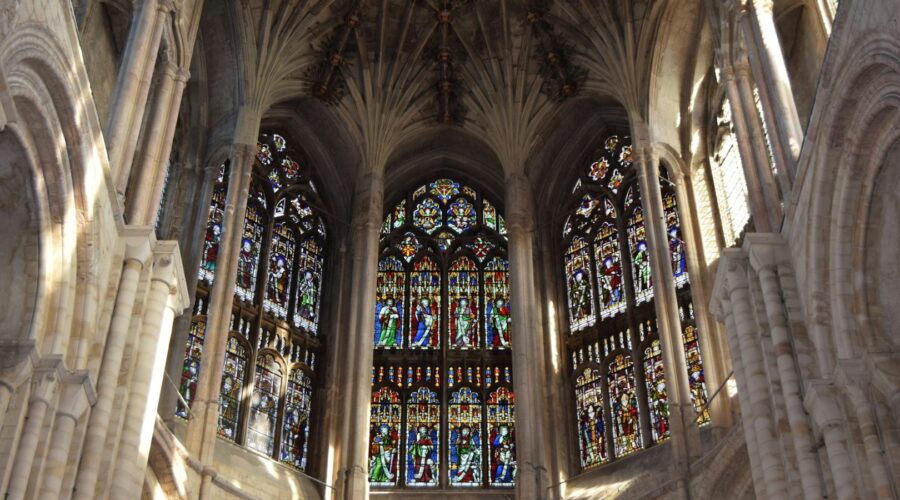
Discover New Hope Community Church: A Beacon of Faith and Community
Welcome to New Hope Community Church
Welcome to New Hope Community Church, a vibrant and welcoming faith community located in the heart of [City Name]. We are a diverse and inclusive church that believes in the power of God’s love to transform lives. Our mission is to share the Good News of Jesus Christ with our community and beyond, and to provide a welcoming and supportive environment for all who seek to follow Him.
Our Mission and Values
At New Hope Community Church, we believe that:
- God loves all people unconditionally.
- Jesus Christ is the only way to salvation.
- The Bible is the inspired and inerrant Word of God.
- The Holy Spirit empowers us to live a life that is pleasing to God.
- We are called to love and serve our community.
We strive to live out these values in everything we do. We believe that the church is a family, and we are committed to creating a community where everyone feels welcome, loved, and accepted. We also believe that the church is called to be a force for good in the world, and we are actively involved in serving our community in a variety of ways.
Sunday Worship Services
Our Sunday worship services are held at [Time] at [Location]. Our services are lively and engaging, and they include music, prayer, preaching, and communion. We also have a variety of children’s programs that run during the service.
Other Programs and Events
In addition to our Sunday worship services, we offer a variety of other programs and events for all ages. These include:
- Bible studies
- Small groups
- Youth programs
- Children’s programs
- Community outreach programs
We also host a variety of special events throughout the year, such as concerts, movie nights, and community dinners.
Ministries for All Ages
We believe that everyone has a place at New Hope Community Church. That’s why we offer a variety of ministries that cater to the needs of people of all ages. These ministries include:
- Children’s Ministry: Our children’s ministry provides a safe and nurturing environment for children to learn about Jesus and grow in their faith. We offer a variety of programs for children of all ages, including Sunday School classes, Bible clubs, and special events.
- Youth Ministry: Our youth ministry is designed to help teenagers navigate the challenges of adolescence and grow in their faith. We offer a variety of programs for teenagers, including youth group meetings, Bible studies, and mission trips.
- Adult Ministries: Our adult ministries provide opportunities for adults to connect with other believers, grow in their faith, and serve the community. We offer a variety of adult ministries, including Bible studies, small groups, and community service projects.
- Senior Ministries: Our senior ministries provide opportunities for seniors to stay connected with the church and community. We offer a variety of programs for seniors, including monthly luncheons, Bible studies, and day trips.
How to Get Involved
There are many ways to get involved at New Hope Community Church. You can attend our Sunday worship services, join a small group, volunteer for a ministry, or participate in one of our many community outreach programs. We also encourage you to connect with us on social media or visit our website for more information.
Contact Us
If you have any questions or would like to learn more about New Hope Community Church, please contact us at:
- Phone: (XXX) XXX-XXXX
- Email: [email protected]
- Website: www.newhopecommunitychurch.org
We look forward to hearing from you!